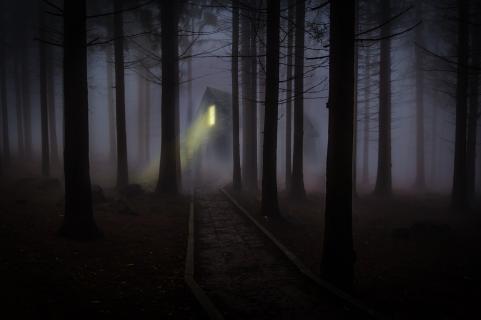
By Jenny Itell
In the middle of the night, when I can’t sleep, which is fairly often, I read mysteries. It feels kind of like snacking in bed. Junk food, some might call it. Easy reading. Though I don’t think of it as easy. I’m often duped by mystery writers; I rarely see the ending coming. I have a sister who likes mysteries too, and we often read the same ones at the same time. I’ll call her and say, “Wow, I wasn’t expecting that!” And her response is invariably, “Really? I totally saw that coming.”
This past year, I read almost everything by Kate Morton. I discovered Morton when I came upon The Lake House on display in the library. It sat on my night table for a couple weeks before I opened it in the wee hours of a sleepless night and found myself exactly where I wanted to be: snooping around an abandoned estate in the English countryside, trying to figure out what had become of a boy who went missing decades earlier. With Morton’s novels, my sister always worked out what was going on before I did. Either she’s better at reading clues, or I’m not at my most alert between midnight and 3:00 AM, or maybe it’s simply that I so enjoy being misdirected that I willfully fall into an author’s hand.
A few more titles that stand out as favorite night reads are Gone Girl by Gillian Flynn, The Girl on the Train by Paula Hawkins, The Thirteenth Tale by Diane Setterfield, and Fingersmith by Sarah Waters. Fingersmith is aptly described by The New York Times Book Review as “Oliver Twist with a twist.” It’s set in Victorian London and revolves around a thrown-together family of thieves. Technically, it might not be a mystery, but it’s a super fun read, and the fun of reading it comes from being tricked by the author—not by the characters, really, as each shares her own story as she understands it. I suppose what Waters is doing is part trickery, part skilled manipulation of point of view.
Lauren Groff does something similar in her most recent novel, Fates and Furies. It isn’t a mystery (or a middle-of-the-night read, in my opinion), but it’s a stunning book, and Groff, with her point of view choices, both directs and artfully misdirects her readers. Briefly, Fates and Furies is the story of Lotto and Mathilde and their decades-long marriage. The first half of the book mostly follows Lotto, though an overriding omniscient voice dips us into other heads as well. But it steers clear of Mathilde’s head. She’s off limits until the second half of the book, when the point of view is handed to her. Groff breaks several point of view “rules,” and to great effect. One effect is that we’re directed to see a marriage in a certain light, then that light shifts, and some of what we’ve come to learn falls away.
Because I struggle with subtlety in my own writing (readers often guess what’s coming), I like to delve into a book and see how an author steers and purposefully misdirects. I most often do this with mysteries, but it’s also interesting to do it with more character-driven works, like Groff’s. Of course, I like to do this after I’ve enjoyed the twists and turns of being duped. It’s like riding a roller coaster and then, still reeling, standing underneath it and looking up.
This post is part of our annual Lit Counts series, in which writers and readers express why supporting and elevating literary arts—the mission of Lighthouse Writers Workshop— is important to them. If you agree, consider supporting Lighthouse on Colorado Gives Day. Mark your calendar for December 6 or schedule your gift now. Thank you!
Jenny Itell's short stories and creative nonfiction have appeared in a variety of publications, including Ellery Queen Mystery Magazine, Literary Mama, 5280, Redbook Magazine, StoryQuarterly, and Cimarron Review. Jenny has taught at Lighthouse Writers since 1998; her next class, Hey, Look Over There! Misdirection in Fiction, is November 5.

